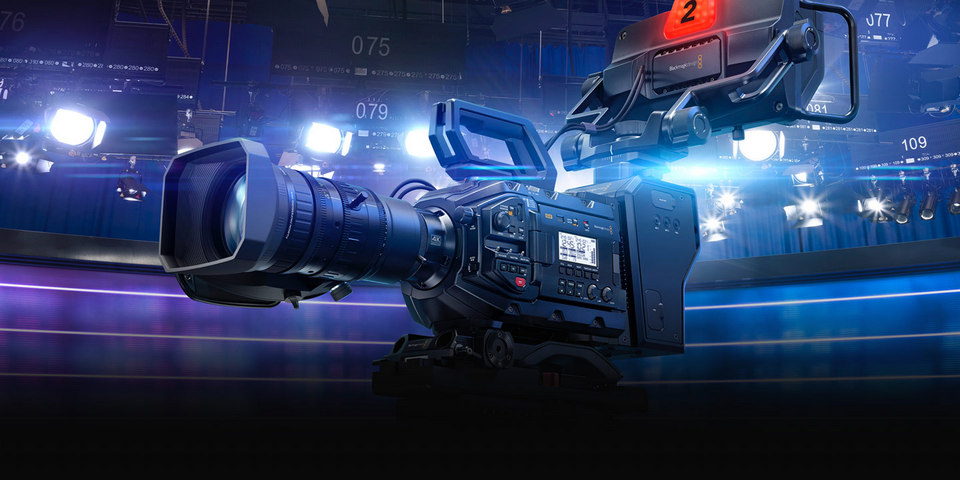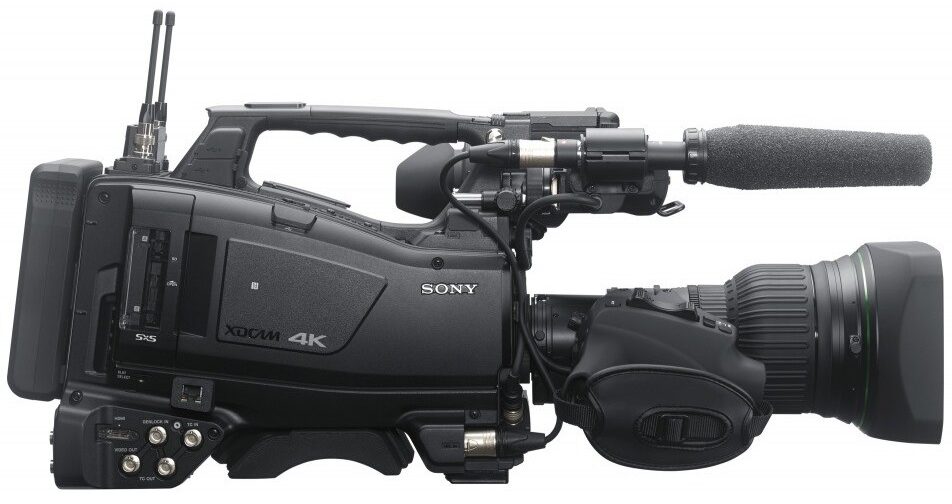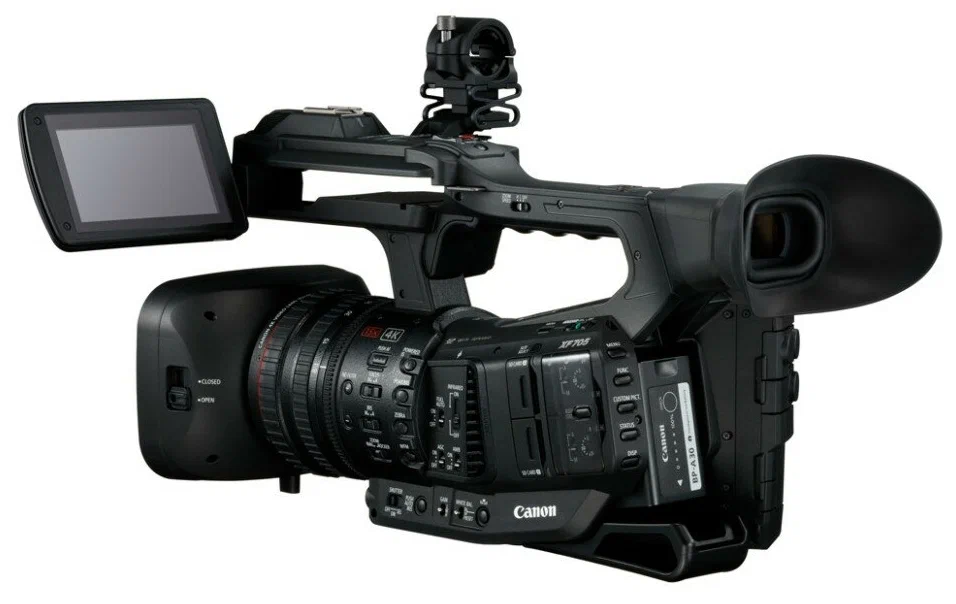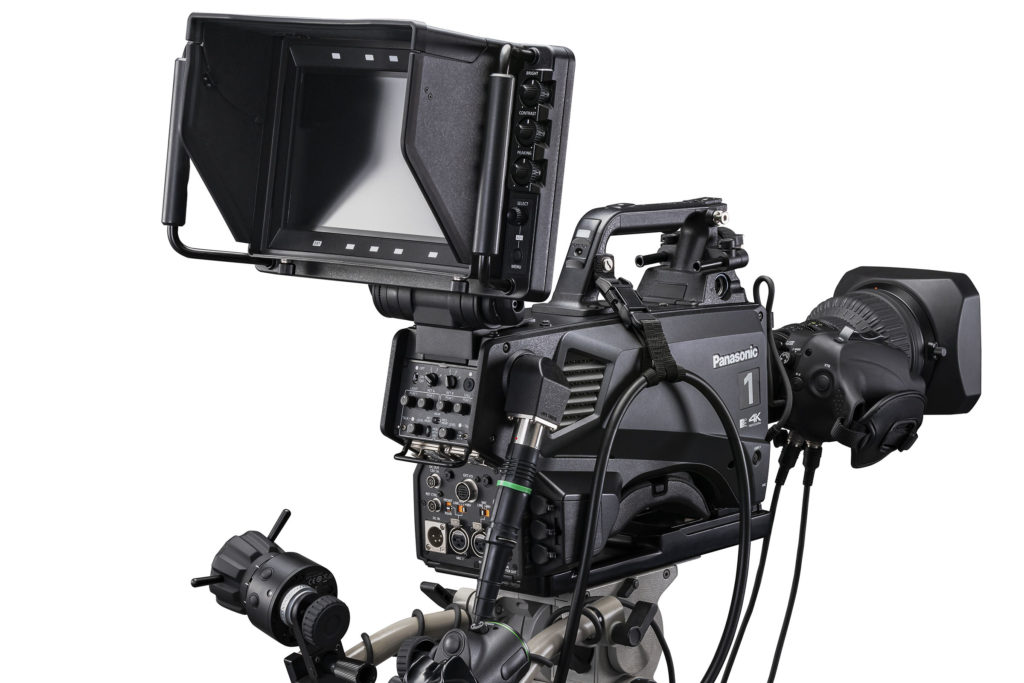
Do you know about the URSA Broadcast G2 camera from Blackmagic Design? It’s a powerful camera that’s ideal for covering live events and live broadcasts. It boasts a super 35mm sensor with a dynamic range of 15 stops, which enables it to capture even the most difficult lighting situations in 4K resolution.
You may utilize your preferred lenses with little fuss thanks to its interchangeable lens mount and built-in ND filters. The best thing, though? It’s quite simple to use and ideal for photographing while moving around.
Ergonomics
With a shoulder mount that evenly distributes the weight of the camera for prolonged handheld filming, the Blackmagic Design URSA Broadcast G2 is renowned for its ergonomic and comfortable design. For simple framing and focus management, the camera also includes a big, high-resolution viewfinder and a 4-inch foldout touchscreen interface.
The Sony PXW-Z450 and Panasonic AK-UC4000, in contrast, both have ergonomic designs with shoulder mounts, but the Sony camera has a smaller viewfinder and display while the Panasonic camera has a larger, more durable design with an integrated studio lens.

While the Canon XF705 lacks a shoulder mount for increased stability, its small size and light weight make it convenient to use in confined situations or for prolonged handheld shooting.
Sensors
The 4.6K Super 35mm sensor of the Blackmagic Design URSA Broadcast G2 has a dynamic range of up to 15 stops. In contrast, the Sony PXW-Z450 has a 2/3-inch type 3CMOS sensor with a 60 dB dynamic range. A 1.0-inch CMOS sensor with a dynamic range of up to 15 stops is featured in the Canon XF705.
The three 2/3-inch type 3CMOS sensors in the PXW-Z450 offer improved low-light performance and noise reduction despite the fact that the URSA Broadcast G2 and XF705 have larger sensors. The URSA Broadcast G2 and XF705 have bigger sensors, which can produce deeper depths of field and better control over bokeh effects. The URSA Broadcast G2 and XF705 both have greater dynamic ranges than the PXW-Z450, which can lead to more flexible color grading in post-production and improved tonal detail.
Audio
The Blackmagic Design URSA Broadcast G2 has a built-in stereo microphone and four balanced analog XLR inputs with switchable phantom power. Moreover, there is an audio level control panel with big meters, gain control knobs, and indicators for each channel’s phantom power. A 3.5mm headphone jack is also included on the camera for audio monitoring.
On the other hand, the Sony PXW-Z450 includes two XLR inputs with phantom power and attenuation settings that may be adjusted. Moreover, it contains a 3.5mm headphone connector and a built-in stereo microphone for audio monitoring. Moreover, the camera has Sony’s distinctive multi-interface shoe, which enables digital audio connection with accessory compatibility.

The Canon XF705 contains a built-in stereo microphone and four XLR inputs with phantom power and independent audio volume controls. A 3.5mm headphone jack is also included for audio monitoring.
Nevertheless, all three cameras offer excellent audio capabilities, including numerous XLR inputs and a headphone connector for monitoring audio. The Canon XF705 includes individual audio level settings for each XLR input, in contrast to the Sony PXW-multi-interface Z450’s shoe, which offers distinctive digital audio connection possibilities.
Broadcast Capabilities
While the Canon XF705 has a 12G-SDI output and HDR recording capabilities, the Blackmagic Design URSA Broadcast G2 and Sony PAX-Z450 both have built-in ND filters and dual SDI outputs for broadcast purposes. The URSA Broadcast G2 is perfect for live broadcasts because it also offers remote camera control.
All three cameras provide a selection of recording formats, including high-quality RAW files for post-production flexibility and broadcast-standard codecs. Advanced image processing abilities are also provided by the URSA Broadcast G2 and PAX-Z450, which provide workflows for high dynamic range (HDR) and wide color gamut (WCG).
The Sony PAX-Z450 stands out in terms of broadcast-specific capabilities thanks to its integrated wireless receiver and support for Sony’s wireless microphone system. Both the Canon XF705 and the URSA Broadcast G2 include built-in Ethernet connectivity for streaming and remote control, and the XF705 also has dual-band Wi-Fi for wireless file transmission.
Pricing
Blackmagic Design URSA Broadcast G2: This camera, which costs roughly $3,500, delivers a ton of functionality at a reasonable price, making it a perfect option for broadcasters on a tight budget.
The Sony PXW-Z450, which costs roughly $22,000, is a wonderful option for high-end broadcast projects even if it is substantially more expensive than the URSA Broadcast G2. It also has more sophisticated functionality.
The Canon XF705 costs roughly $3,000 and is comparable in price to the URSA Broadcast G2, however it has fewer cutting-edge features. Even so, it still strikes a favorable mix between pricing and quality, making it a preferred option for many broadcasters.

Conclusion
In conclusion, the BlackMagic Design URSA Broadcast G2 is distinguished by its superb ergonomics, sizable sensor, and flexible audio and broadcast capabilities. While the Sony PXW-Z450 and Canon XF705 are formidable rivals, there are several areas where they fall short. Despite having a smaller sensor and less user-friendly ergonomics, the PXW-Z450 boasts excellent autofocus and a strong broadcast workflow. Although the XF705 has a larger sensor than the URSA Broadcast G2, it is less versatile and has fewer broadcasting options. The URSA Broadcast G2 delivers more value for your money due to its wealth of features and capabilities despite all three cameras being priced equally.









